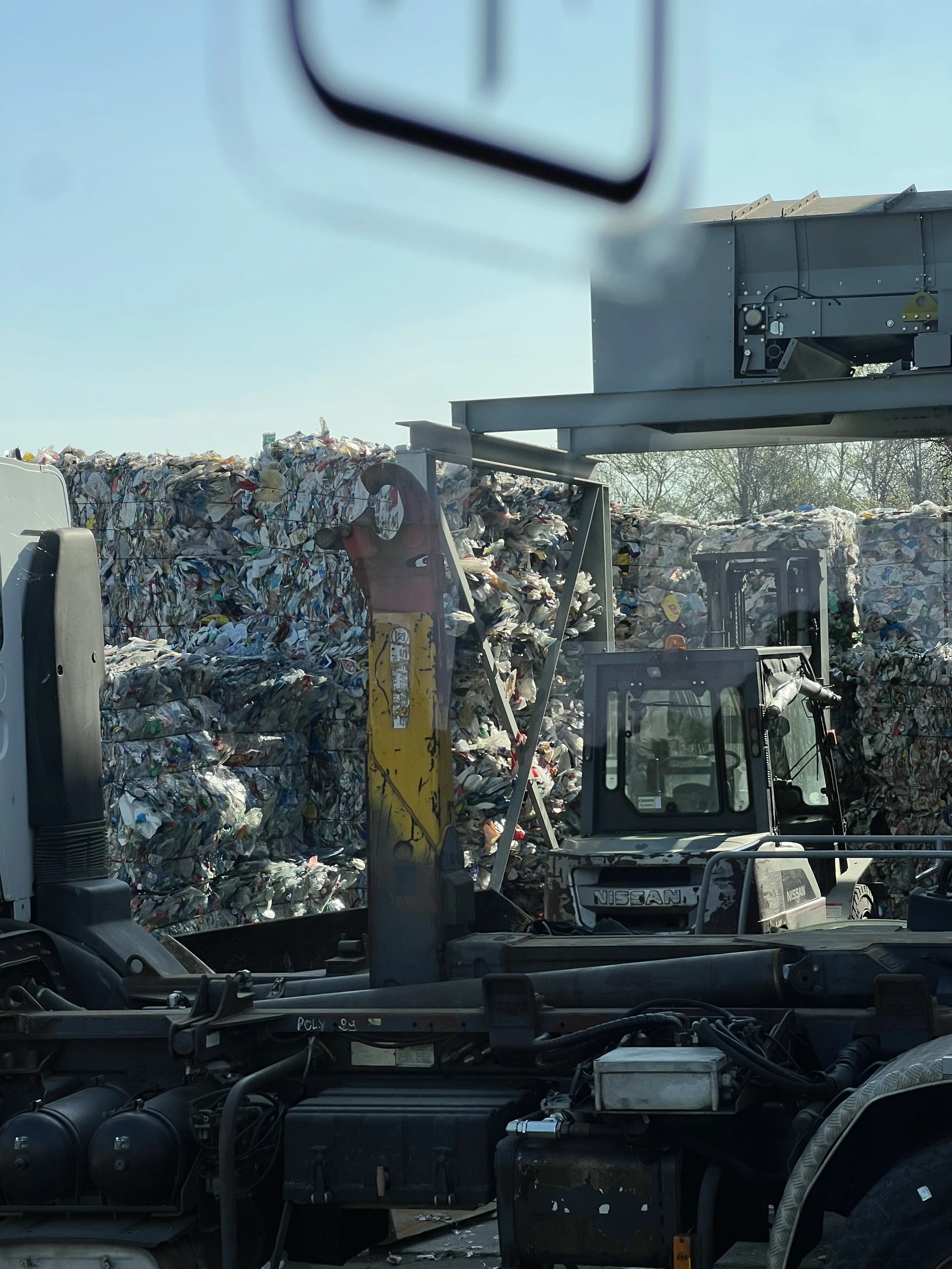Recycling and 3D Printing: A Missed Opportunity?
Today, I had the opportunity to join my daughter’s class on a field trip to our local recycling center in Montpellier, France. This facility serves a metropolitan area of 500,000 residents, and while it does not process regular trash, glass, or textiles, the sheer volume of recyclables collected was eye-opening. This center processes nearly 35 000 tons of materials each year, including paper, cardboard, light metals, plastics, and packaging materials. Their system is highly detailed, and the visitor center provided an informative presentation on how these materials are sorted and processed.
Bales of plastic bottles outside Montpellier recycling center waiting for their next life.
One of the rooms featured interactive games, observation windows overlooking the sorting belt and compactor, and—surprisingly—an older 3D printer. It was a model I hadn’t seen in over a decade since I first started 3D printing. The machine, an XYZ DaVinci Printer, wasn’t operational at the time but appeared to have been used recently. This particular model had a proprietary filament system, requiring special spools embedded with a chip to track how much material remained. The intention was to ensure enough filament was available to complete a print, but it also prevented users from refilling spools with alternative materials.
This got me thinking: Why aren’t recycling centers leveraging their resources to support 3D printing?
Turning Plastic Waste into Usable Filament
I recently came across a DIY method for creating PETG filament from recycled plastic bottles. The process involves cleaning and stripping labels from soda or water bottles, cutting them into thin strips, and feeding them through a heated extrusion system. The plastic melts and is reshaped into 1.75mm filament—standard for most 3D printers. Once spooled, this recycled filament can be used for new projects. PETG is stronger than PLA and is even food-safe, though it requires higher printing temperatures (230ºC to 245ºC).
PETG filament machine from a DIY builder [source: Creative3DP]
If hobbyists can do this at home, imagine the impact a recycling facility could have at scale.
A Scalable Solution for Recycling Centers
Recycling centers already collect and bale plastic bottles. Instead of merely processing them for resale or downcycling, why not refine the process to produce 3D printing filament? The workflow could resemble large-scale filament production: plastic bottles are shredded into small flakes, melted, extruded, and wound onto spools for use.
Years ago, while working at a summer program, a colleague and I posed this very question: How can we turn recycled plastic into usable filament at scale? Perhaps today, we are closer to a solution. If recycling centers partnered with filament manufacturers, we could create a sustainable loop—turning waste into value while reducing landfill contributions.
What’s Next?
Do you know how your local recycling center processes plastic waste? Could this idea become a reality in your community? Let us know your thoughts!
#3DPrinting #Recycling #SustainableTech #CircularEconomy #EcoFriendly #PETG #FilamentRecycling #GreenTechnology


